Dalí Theatre and Museum in Figueres - Collection, Prices, Opening Hours

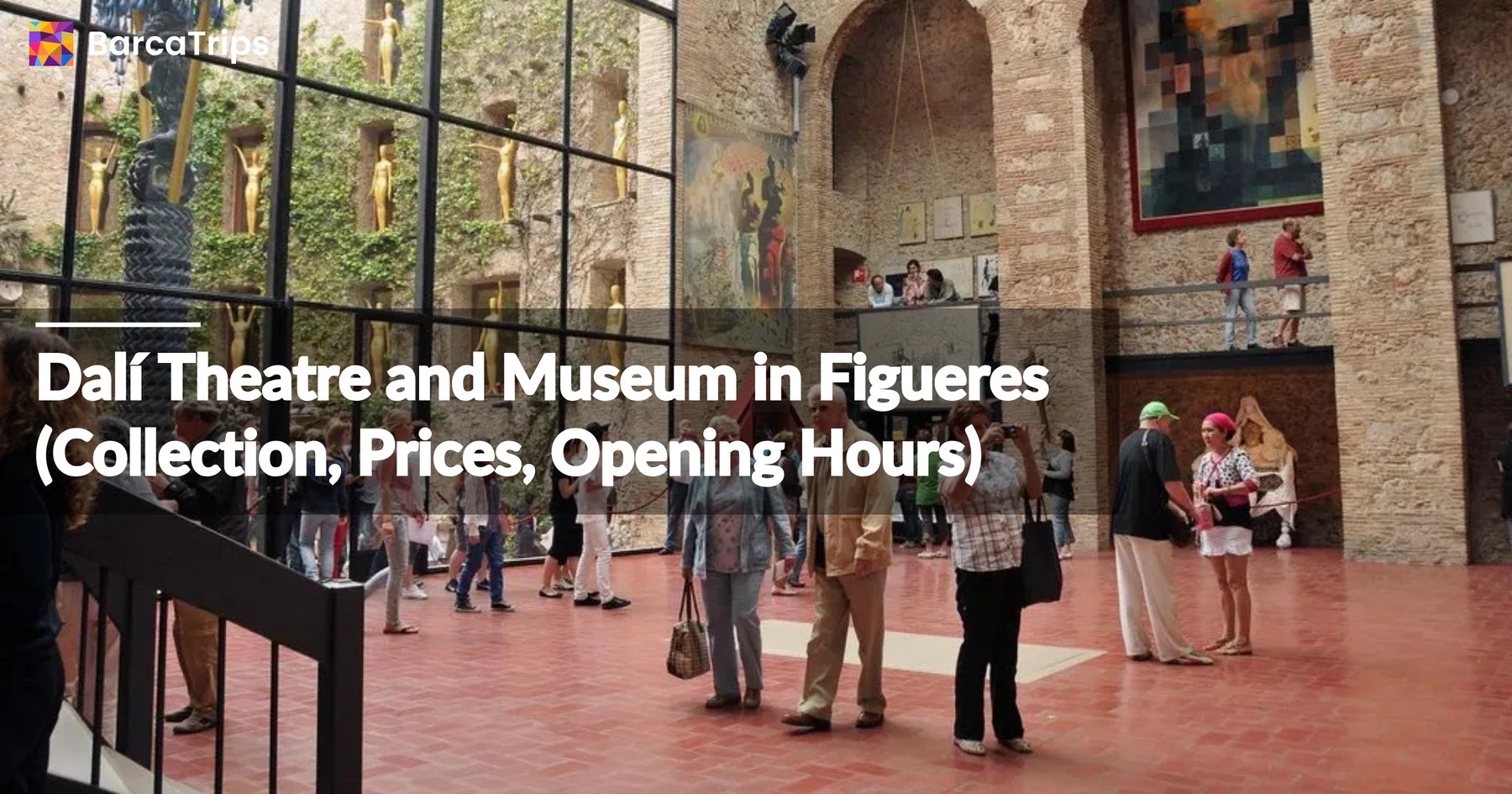
The Dalí Theatre and Museum in Figueres, Catalonia, is one of the most unique art museums in the world. It was designed by the legendary surrealist Salvador Dalí himself and reflects his genius and imagination in every detail.
Visitor Information
Dali Museum is located in the heart of Figueres, Catalonia. It’s easily accessible from nearby cities like Barcelona and Girona. Plan at least two to three hours to explore the museum fully. For a complete day trip, consider visiting nearby attractions in Figueres, such as the Toy Museum of Catalonia or the Sant Ferran Castle. Guided visits are available in English, French, Catalan, and Spanish (check schedule).
Note: Booking in advance is recommended. The museum is closed on 1 Jan and selected Mondays (check exceptions).
Opening Hours
| Period | Days Open | Hours |
|---|---|---|
| 1 Jan - 30 Jun & 1 Oct - 31 Dec | Closed Mondays (except: 25 Mar, 1 Apr, 6 May, 20 May, 24 Jun, 30 Dec). Closed 1 Jan. | 10:30 – 17:15 |
| 1 Sep - 30 Sep | Closed Mondays (except 23 Sep). Closed 25 Sep. | 09:30 – 17:15 |
| 1 Jul - 31 Aug | Open every day. | 09:00 – 19:15 |
Prices
| Season | Category | Online Price | Description |
|---|---|---|---|
| 1 Jan - 30 Jun & 1 Sep - 31 Dec | General | €17.0 | |
| Reduced | €14.00 | Students and pensioners 65+. | |
| General + Guided Visit | €25.00 | Guided visit (check schedule). | |
| Reduced + Guided Visit | €22.00 | ||
| Groups (25+ people) | €14.00 | Reservation required. | |
| School Groups (no guide) | €14.00 | Reservation required. | |
| School Groups (with guide) | €6.50 | Guided visit fee not included; reservation required. | |
| 1 Jul - 31 Aug | General | €21 | |
| Reduced | €16 | Students and pensioners 65+. | |
| General + Guided Visit | €29 | Guided visit (check schedule). | |
| Reduced + Guided Visit | €24 | ||
| Groups (25+ people) | €14 | Reservation required. | |
| School Groups (no guide) | €14 | Reservation required. | |
| School Groups (with guide) | €6.50 | Guided visit fee not included; reservation required. |
Origins of the Dali Museum
The idea for the Dalí Theatre and Museum began in the 1960s when the mayor of Figueres, Dalí’s hometown, asked the artist to donate a single piece of his work to the local Ampurdán Museum. Instead of giving just one artwork, Dalí envisioned something much grander—a museum dedicated entirely to his art.
Dalí chose the Figueres Municipal Theatre as the site for his project. This location held special meaning for him, as it was where his first public art exhibition was hosted. Although the building had been almost completely destroyed during the Spanish Civil War, Dalí saw it as the perfect place to bring his vision to life.
With full dedication to the project, Dalí oversaw every detail of the museum’s design. After years of work, the Dalí Theatre and Museum opened its doors on September 28, 1974.
The Architecture of the Dali Museum
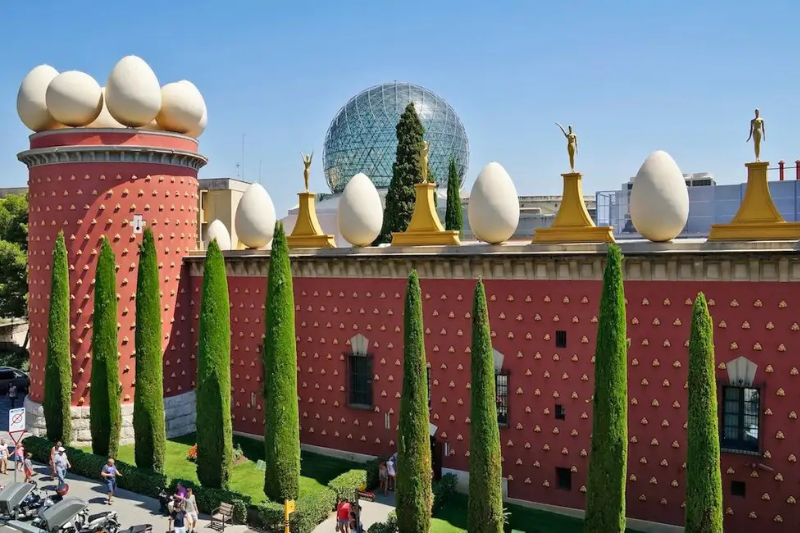
The Dalí Theatre and Museum is a striking example of surrealist architecture. It truly reflects Salvador Dalí’s unique style and personality. Its most famous feature is the glass dome on top of the building, which has become a symbol of the museum.
The red exterior, decorated with golden figurines and crowned with giant egg sculptures, makes the building stand out. The eggs, a recurring theme in Dalí’s work, represent life and creativity. The central courtyard is another highlight, featuring a black Cadillac surrounded by surreal sculptures.
Rooms are designed with unique details, including upside-down furniture and the Mae West Room, where the furniture creates a 3D portrait of the actress when seen from the right spot. Every part of the museum is carefully crafted to reflect Dalí’s artistic vision, making the building a piece of art itself.
Dali Museum’s Interior
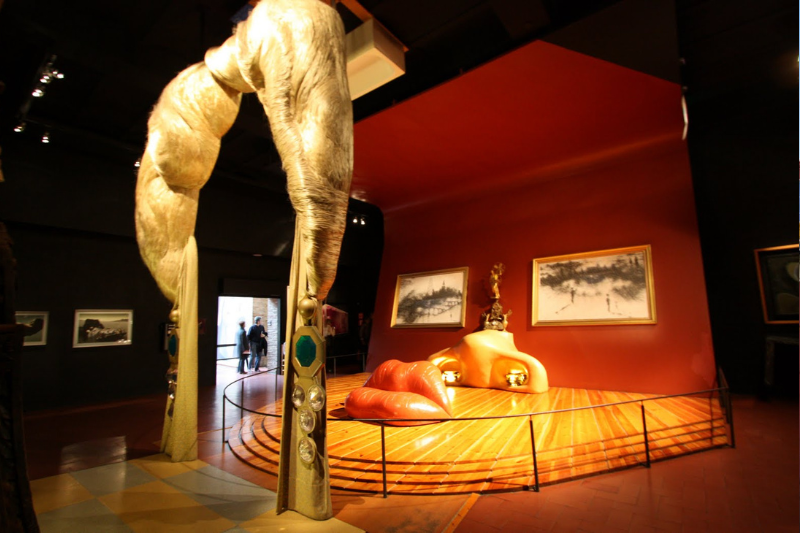
Mae West Room
The interior of the Dalí Theatre and Museum is a surreal experience, designed to make visitors feel like they’re stepping into one of Salvador Dalí’s paintings. Every room is filled with unique and imaginative details that reflect his artistic vision.
One of the most famous spaces is the Mae West Room. When viewed from a specific angle, the furniture in the room—including the iconic lip-shaped sofa—forms a 3D portrait of the actress Mae West.
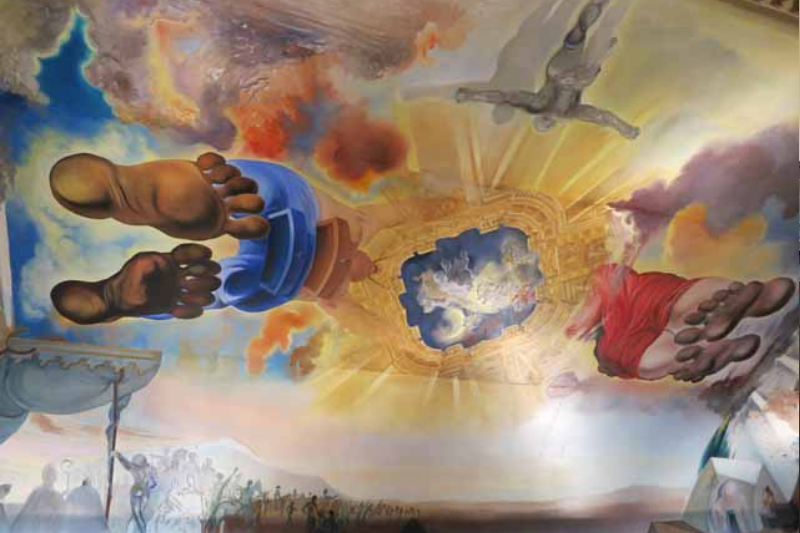
Wind Palace Room
The museum also has the Wind Palace Room and a monument dedicated to the philosopher Francesc Pujols, both created by Dalí specifically for this space.
The museum is full of surprises, like an installation of upside-down furniture attached to the ceiling. Visitors can also explore a room dedicated to optical illusions, holographic art, and stereographs.
This museum perfectly shows Dalí’s fascination with science and perception. Each exhibit blurs the line between reality and imagination.
Art Collection - What Can You See in Dali Museum?
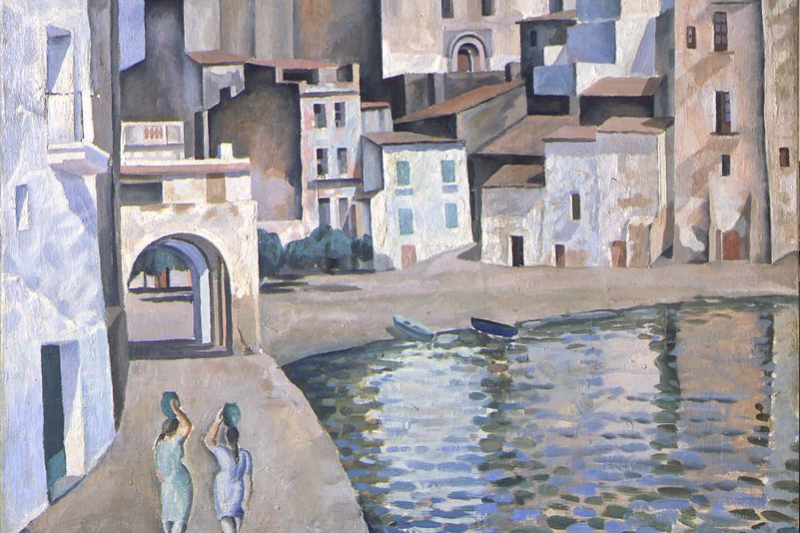
Port Alguer
The Dalí Theatre and Museum houses the largest collection of Salvador Dalí’s works in one location. The collection spans Dalí’s entire career, displaying pieces from his early experiments to his later, more complex creations.
Visitors can admire iconic works such as Port Alguer (1924), The Cosmic Athletes (1943), Leda Atomica (1949), and The Swallow’s Tail (1983), which was his final oil painting. Some of these masterpieces were part of Dalí’s personal collection.
The museum also displays art created specifically for this space, including the famous Mae West Room and the Wind Palace Room. Dalí’s interest in pushing boundaries is evident in his holographic art and jewelry designs, which are also displayed here.
In addition to Dalí’s work, the museum includes pieces by other artists he admired, such as Antoni Pitxot and Evarist Vallès. This mix of Dalí’s creations and the work of his contemporaries adds depth to the collection. It gives visitors a glimpse into the artistic world that inspired him.
How to Get to the Dalí Museum from Barcelona
The Dalí Theatre and Museum is located in Figueres, about 140 kilometers (87 miles) northeast of Barcelona. You can get there by train, bus or by car.
For the train, there are two options - High-Speed Train (AVE) and Regional Train (R11). AVE travel time is around 55 minutes and for the R11 it's 2 hours. Both depart from Barcelona Sants Station.
There are also direct bus services and travel time is about 2 hours and 15 minutes. They depart from Barcelona Nord Bus Station.
You can also drive towards Figueres on a AP-7 highway and just follow the signs to the museum. This might take you around 1 hour and 45 minutes. There is a parking space around the museum.
If you want to avoid the hussle, just joing a guided day trip tour. Most of these tours are organized and include the transport and a guided visit.


